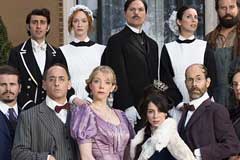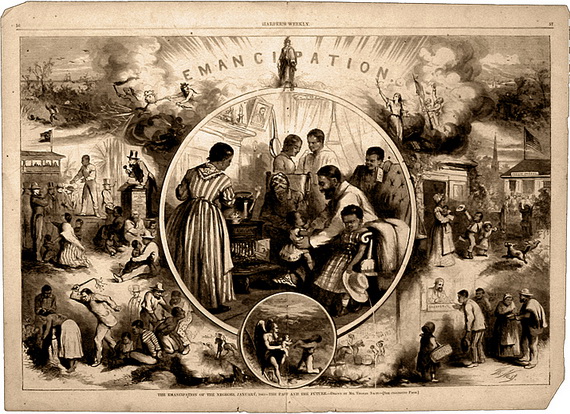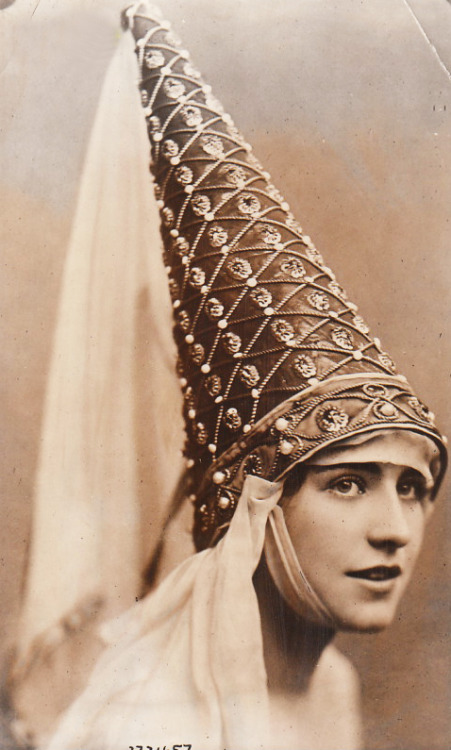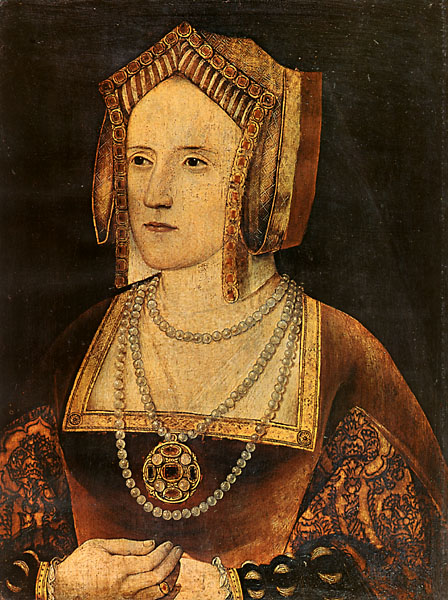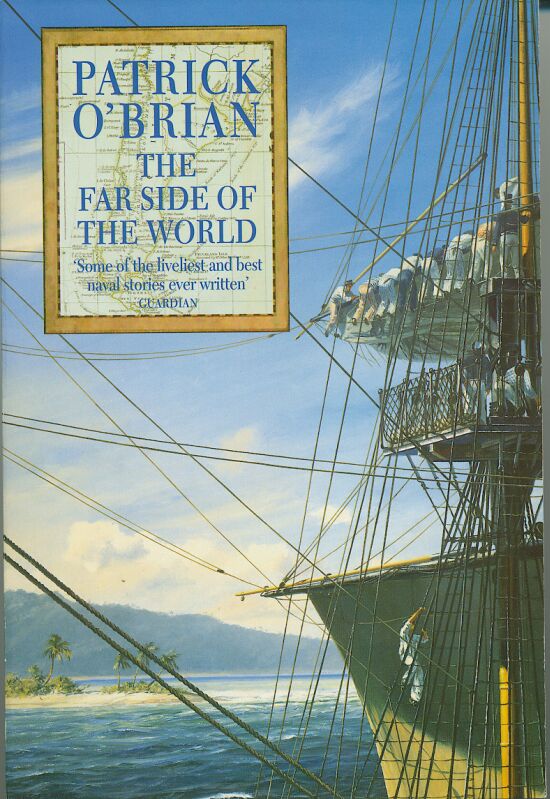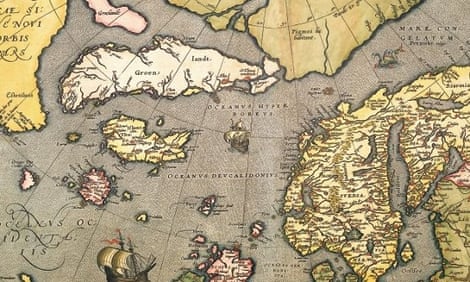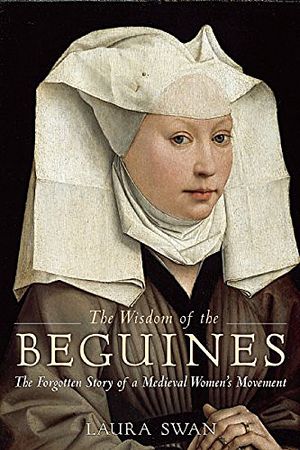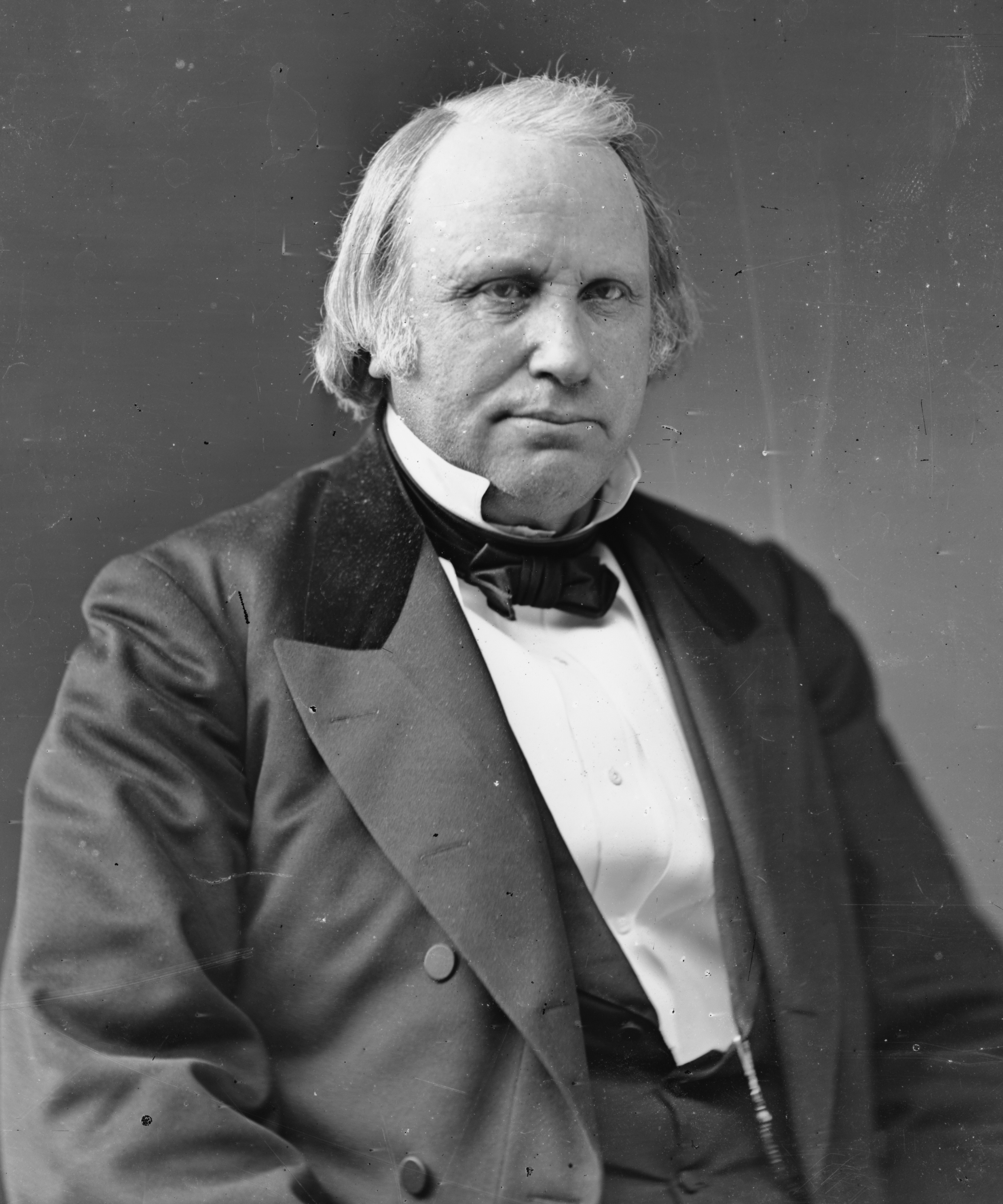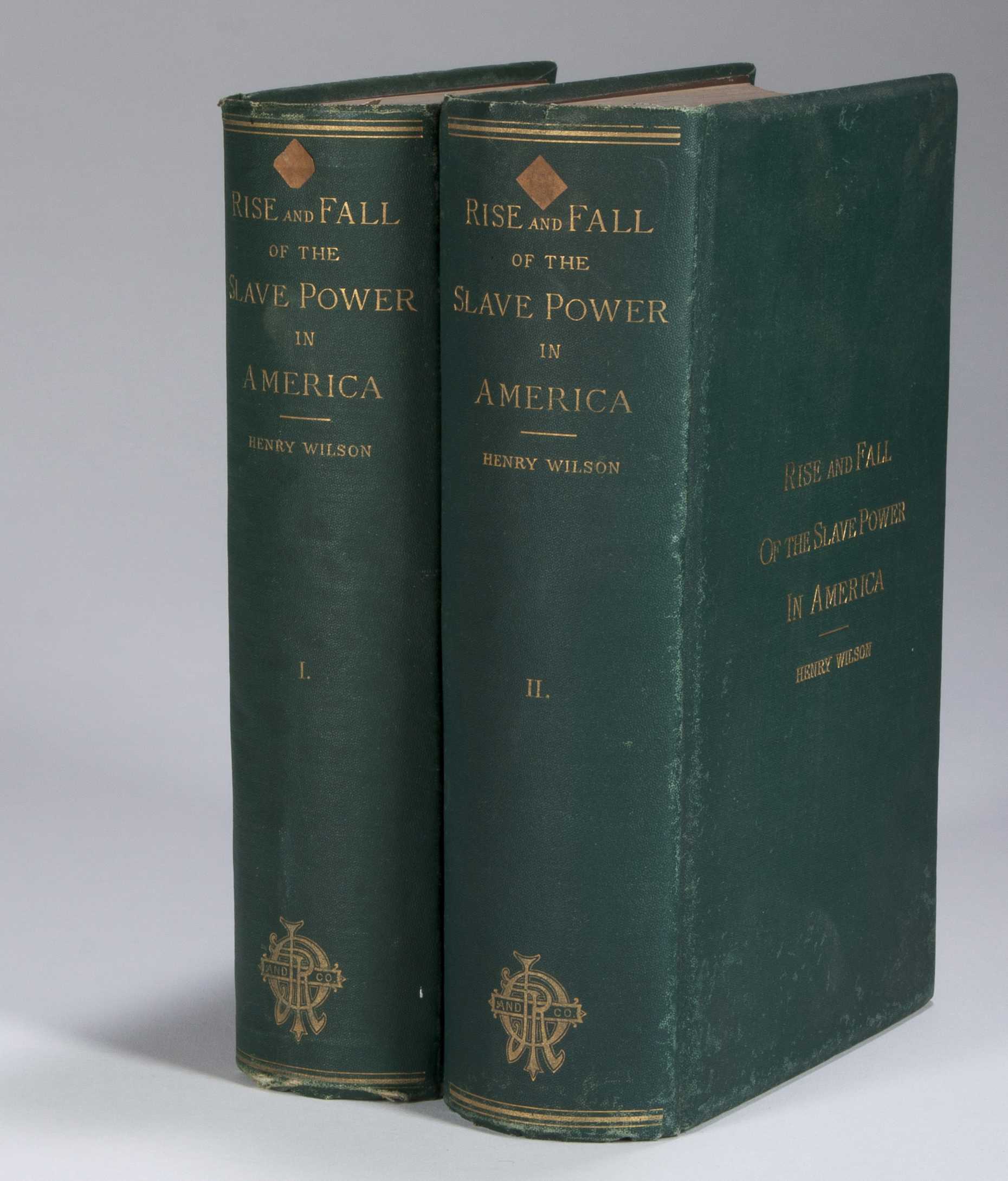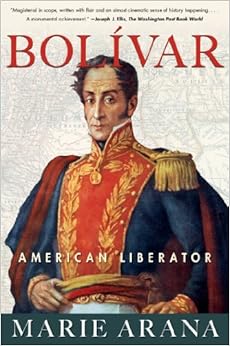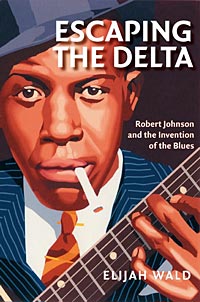The Comedy Central series, Another Period, parodies the Downton Abbey era costume soaps that portray happy, contented, loyal downstairs who know and keep and love their place, who understand how much superior to themselves are
their upstairs betters. Another Period is set in the Gilded Age Newport, which, it is said, where Julian Fellows plans to place his next a-historic extravaganza. Eps run about 22 minutes. A series of sketches, sketchily stitched together, the viewer wouldn't want more at a time than 20 minutes.
Among the featured plays is Christina Hendrick, Joan Holloway in Mad Men. She is a terrific actress with a wide range, as Mad Men showed. Mad Men also showed that she's a terrific comedian, which she is here. Her timing is impeccable.
I just watched the pilot, which pointed to historical class nasties enough to be favorably amusing. Christina Hendricks was in the pilot the primary reason it worked. Her character's name is Celine, however her betters provide a name more suitable to a servant, "Chair."
Tuesday, June 23, 2015
Friday, June 19, 2015
Thursday, June 18, 2015
Will South Carolina Lower the CSA Battle Flag Over Its State House in Respect and Mourning
Will South Carolina lower its CSA battle flag flying at the state capital in respect and mourning of the good, Christian people murdered by terrorist attack in Charleston?
I first learned of this awful event while, by sorrowful coincidence, we were fact-checking, copy editing via reading aloud this morning the chapters in The American Slave Coast that trace the history of South Carolina, founded in white supremacy, slave trading and slavery of both Natives and Africans from the start of some of the founders in Barbados.
The Obamas knew the murdered pastor. This has got to be a terrible day for them, recognizing in many ways those shot in cold blood were surrogate targets for First Family.
How many times must it be proven that white supremacy and guns are a deadly combination for any nation that proclaims equality and democracy and diversity as positive goods.
From President Obama's speech:
Mother Emanuel is, in fact, more than a church. This is a place of worship that was founded by African Americans seeking liberty. This is a church that was burned to the ground because its worshipers worked to end slavery. When there were laws banning all-black church gatherings, they conducted services in secret. When there was a nonviolent movement to bring our country closer in line with our highest ideals, some of our brightest leaders spoke and led marches from this church’s steps. This is a sacred place in the history of Charleston and in the history of America.
One of Mother Emanuel's founders, in fact, was Denmark Vesey, a black martyr for African American freedom (we have a photograph of the ground where he was hung in The American Slave Coast).
The fact that this took place in a black church obviously also raises questions about a dark part of our history. This is not the first time that black churches have been attacked. And we know that hatred across races and faiths pose a particular threat to our democracy and our ideals.
Will this white supremacist be given the death penalty as has the surviving Boston Marathon Bombing brother?
Labels:
Guns,
racisim,
U.S. culture,
U.S. History,
violence,
white supremacy
Wednesday, June 17, 2015
Reading Wednesday - The Mystic Marriage by Heather Rose Jones - No Spoilers
I'm not going to say much about this novel because someone else already has, and done an excellent job, here.

I admired, enjoyed, admired and liked The Mystic Marriage (2015). It's a Ruritanian - alternate European history fantasy of alchemy and romance in what is either the period between Napoleón's escape from Elba and Waterloo, or right after it, since there don't seem to be any wars going on during the period of this novel. The reason I foreground the question of chronology is that my favorite part is the opening. Antuniet Chazillen, one of the four protagonists has escaped from Prague to Heidelburg, and needs to escape her pursuers again, which sends her back to the capitol of Alpennia, her family's home country. She is able to take a coach, it seems across boundaries, with little or no trouble, which, while not necessarily that troublesome in peace, would certainly be troublesome during the time of Napoleón's wars.
What I admired was the author's way with the names of people, families, and place. They were consistent throughout, and felt plausible to an imaginary language surrounded by the languages of what had been the Austro-Hungarian and the Polish empire as well, before the coalition of Russia, Prussia and Austria ate it up. Contributing to the admiration
What I enjoyed the most were those four protagonists, each on with agency, each one with a purpose in life, who do not necessarily begin as friends, but who all know each other due to this also being a novel of manners, thus family and social connections are not only plot points but help define characters strengths, weaknesses and growth. The only drawback to this sort of thing, if you, as I do, like this sort of thing, is that the novel plays out mostly within the elite classes, and that leaves out most of a society. This tends also to tend to sense of claustrophobia after a while. These four protagonists are pairs, or at least two of them are a pair-in-making. How these two become a pair is why the alchemical term, "Mystic Marriage" (or Sacred Marriage) makes for such a splendid title. On the mundane level too, this is a romance that goes beyond "romance." Via the process of becoming a pair, the 'coniunctio', the so-called social butterfly's own life-work is revealed through the heat and pain of true love's transformation, and the other becomes a fuller person with capacity for living -- meaning that the two become greater together than by themselves. I do like that sort of thing in a novel, in which true love is revealed to be something even more than the best sex that has ever taken place in the history of the world. But I also admire it greatly because one can't just decide to write this. It literally emerges out of the marriage of the writer's heat and pain in collaboration with the elements her talent has chosen to put into the crucible of the process of writing.
Nevertheless, the potential claustrophobia is kept to a minimum, due muchly to the character of Jeanne Vicomtesse de Cherdillac, who is what I liked the most in The Mystic Marriage. Interestingly Jeanne's classified as a social butterfly, while the other three have the status of women with a working profession: Antuniet is an alchemist, Margerit Sovitre is thaumaturgist to the Queen Regent, and Baronness Barbara Saveze is a weapons master. In the first novel, Barbara was an armin, i.e. a bodyguard.
 So, in the course of reading The Mystic Marriage we realize this is a second novel in what is called the Alpennia series. I have not read the first one, Daughter of Mystery, thus I am in an excellent position to say that the reader does not need to have read it first in order to understand and thoroughly enjoy the second one.
So, in the course of reading The Mystic Marriage we realize this is a second novel in what is called the Alpennia series. I have not read the first one, Daughter of Mystery, thus I am in an excellent position to say that the reader does not need to have read it first in order to understand and thoroughly enjoy the second one.
Yesterday I saw two copies of The Mystic Marriage on the New Books shelves in one of my local public library branches.
The author talks of her books here.

I admired, enjoyed, admired and liked The Mystic Marriage (2015). It's a Ruritanian - alternate European history fantasy of alchemy and romance in what is either the period between Napoleón's escape from Elba and Waterloo, or right after it, since there don't seem to be any wars going on during the period of this novel. The reason I foreground the question of chronology is that my favorite part is the opening. Antuniet Chazillen, one of the four protagonists has escaped from Prague to Heidelburg, and needs to escape her pursuers again, which sends her back to the capitol of Alpennia, her family's home country. She is able to take a coach, it seems across boundaries, with little or no trouble, which, while not necessarily that troublesome in peace, would certainly be troublesome during the time of Napoleón's wars.
What I admired was the author's way with the names of people, families, and place. They were consistent throughout, and felt plausible to an imaginary language surrounded by the languages of what had been the Austro-Hungarian and the Polish empire as well, before the coalition of Russia, Prussia and Austria ate it up. Contributing to the admiration
What I enjoyed the most were those four protagonists, each on with agency, each one with a purpose in life, who do not necessarily begin as friends, but who all know each other due to this also being a novel of manners, thus family and social connections are not only plot points but help define characters strengths, weaknesses and growth. The only drawback to this sort of thing, if you, as I do, like this sort of thing, is that the novel plays out mostly within the elite classes, and that leaves out most of a society. This tends also to tend to sense of claustrophobia after a while. These four protagonists are pairs, or at least two of them are a pair-in-making. How these two become a pair is why the alchemical term, "Mystic Marriage" (or Sacred Marriage) makes for such a splendid title. On the mundane level too, this is a romance that goes beyond "romance." Via the process of becoming a pair, the 'coniunctio', the so-called social butterfly's own life-work is revealed through the heat and pain of true love's transformation, and the other becomes a fuller person with capacity for living -- meaning that the two become greater together than by themselves. I do like that sort of thing in a novel, in which true love is revealed to be something even more than the best sex that has ever taken place in the history of the world. But I also admire it greatly because one can't just decide to write this. It literally emerges out of the marriage of the writer's heat and pain in collaboration with the elements her talent has chosen to put into the crucible of the process of writing.
Nevertheless, the potential claustrophobia is kept to a minimum, due muchly to the character of Jeanne Vicomtesse de Cherdillac, who is what I liked the most in The Mystic Marriage. Interestingly Jeanne's classified as a social butterfly, while the other three have the status of women with a working profession: Antuniet is an alchemist, Margerit Sovitre is thaumaturgist to the Queen Regent, and Baronness Barbara Saveze is a weapons master. In the first novel, Barbara was an armin, i.e. a bodyguard.
 So, in the course of reading The Mystic Marriage we realize this is a second novel in what is called the Alpennia series. I have not read the first one, Daughter of Mystery, thus I am in an excellent position to say that the reader does not need to have read it first in order to understand and thoroughly enjoy the second one.
So, in the course of reading The Mystic Marriage we realize this is a second novel in what is called the Alpennia series. I have not read the first one, Daughter of Mystery, thus I am in an excellent position to say that the reader does not need to have read it first in order to understand and thoroughly enjoy the second one.Yesterday I saw two copies of The Mystic Marriage on the New Books shelves in one of my local public library branches.
The author talks of her books here.
Tuesday, June 16, 2015
Acadiana - HBO True Detective, Season 1
The first HBO series of True Detective is located and shot in Louisiana's cajun Acadiana. The friend we visited in Breaux Bridge highly recommended I watch, as he pointed out various places and views as being in the HBO series. The program had conveniently arrived dvd, so after getting back home, I ordered up on netflix.
What did I get?
Immediate references to the traditional practices in Acadiana of Santería, which is claimed to be the serial killer's theatrical set-up of the discovered victim. (In fact, that antlered crown blahblahblah looks a whole lot more like some idiot's fantasy of ancient European earth sacrifices or something). Speaking as someone who knows what Santería is, in the Caribbean and in Brasil, and in its mother non-syncretized practice as Lucumi in Nigeria's Yoruba land -- who knows personally the initiated and the "priestly" class -- who knows which African and Afro-Caribbean groups came to Louisiana, which parts and when, she howls: NO! NOT IN LOUISIANA -- NOT EVEN IN THE U.S.!
Next, immediate reference to Voodoo, also part of the serial killer's display. WHAT? This reference means nothing, nor is anything made out of it in the script. Nor is whatever is called voodoo in New Orleans the Vodún of Haiti, or the practice in Dahomey -- Benin. For reasons, again, that have to do with who came in the inward San Domingue and Cuban migration to Louisiana during the Napoleonic era, and when. Again, I personally know practitioners, houngans and mambos, from both Haiti and Africa. I also am acquainted of what is called voodoo in New Orleans, and thus am qualified to make this call.
The signature twisted branch, vine and bone forms found with the victims of the serial killings, if there is an actual African-derived underpinning to them, it would be from the religion that in Cuba is called Palo, and which comes ultimately from what we now call Mbanza-Kongo, Angola. Captives from this region are the fundamental layer of all New World slavery populations: South America, the Caribbean and North America. This region of Africa was slaved first and longest, from beginning to the end of slavery in the New World. Thus these spiritual practices were continuously refreshed, until, of course 1808 in what was now the U.S. when the constitutional ban on importing Africans came into place, as protectionism for the Upper South's dominance of the domestic slave trade. But there is not a word about any of this in the script. Nor, of course, would a Palo practitioner be using it as an excuse to be a serial killer.
In fact, the theatrical set-ups of the victims are much more like some fantasy of old European earth magic sacrifice, than anything that would come out of Africa.
This viewer never stopped being thrown out of the show by protagonist Martin Hart (Woody Harrelson) straining all his words through a mouth fist-full of gravel. I kept thinking of the guy who plays Deacon on Nashville, who also delivers his lines through his teeth, meanwhile plumping up his cheeks like a squirrel's filled with nuts.
Rust Cohle/Matthew McConaughey's way of delivering his lines is equally odd, though in a different sort of way. It is even hypnotic, as one would expect from someone the script continually hints is as equally psychopathic in his violence as the serial killer(s).
These delivery styles are supposed to convince the viewer that Martin is a native Louisianan, and Rust used to live in Texas? I kept thinking of all the very bad Brit television shows that always make the U.S. characters come from Texas or somewhere in the South, because evidently that's the only way actors can think of to talk like a USian, and how preposterous they sound. Certainly not like a Texan or any Southerner ever born.
That's the deal -- true detectives not only refuse to give up detecting. They never give up their partner either. Most importantly they have the capacity and the skills to deliver most explosive violence. Equally important as detective partners their preferred form of violence and their drive to commit it must be different ,yet complementary. One must be tormented by good vs. evil, the other must be less philosophical. Rust is always ready to intone his philosophy of the Evil World. Best line thus
is delivered by Marty, "I've got an idea. Let's make the car a place of silent reflection from now on, all right?" Prime time crime novelist, James Lee Burke, with his has worked this vein deeply in his long-running Robicheaux- Purcell series.
In the middle of the series comes the episode in which our two heroes infiltrate a biker drug gang -- every member of which has hair to ass in the back and down to his nipples in the front. Our Heroes have clean chins and cop haircuts. WHERE IS THE UNDERCOVER? This was a fairly pointless episode, evidently included for the sake of a lot of shooting, and o did the reviewers adore it,
In the final episode both Heroes impossibly survive a knife to the gut (Rust Cohle/Matthew McConaughey) (hoisted into the air on that knife and held there) and a hatchet into the chest (Martin Hart / Woody Harrelson). James Lee Burke’s Dave Robichaeux and Clete Purcell, moved from New Orleans to Acadiana, never die either (though wives and girlfriends do), not from the most ghastly wounds, meat-grinding vehicular crashes or fire blazing explosions. Whatever knocks them out, evidently the air of Acadiana can preserve Heroes to fight the Real Evil another day.
Women in True Detective. Hmm. What are women? Evidently to be female is to be non-dimensional cray-cray, hapless victim, prostitute -- ALWAYS HAVE PROSTITUTES -- or bad wife who coerces sex from her husband's partner because she has learned her husband serially cheats on her, and though she tells him to get out, he won't leave.
To quote from Vulture:
True Detective was beautifully photographed, and it is engrossing. McConaughey's cheekbones are particularly mesmerizing.
The most interesting aspect of the series for me is how it slides through time, the past and present, and the musings of the future. Katrina is the breaking place between their shared past and their present encounter, which is absolutely true for Louisianans -- and then Rita, in Acadiana, following Katrina. So much is lost, not least pre-digitized criminal records. Having them encounter each other again after that break shows how the two men changed and how they did not, and how certain actions (and irritations) between two allies can follow all the way up
the time line -- but forgiveness can be achieved.. The killers remain the same, but we're not interested in the killers, or even the victims. They are the pretext to present us us two very different men, and their relationship, and how their trust in each other ultimately is put to the greatest tests, and transcends whatever irritations and wrongs may have been committed.
Starting off the drive around the region, our Breaux Bridge friend took us to have breakfast at a local establishment that would be at home anywhere with a hipster population: local artists' work on the walls, and for sale; designer coffee drinks made to order, local baked goods from bread to muffins to sinful desserts, sandwiches and salads and other dishes, none of which was priced much or at all below what an NYC place would charge. Wi-Fi. An associated art gallery. After breakfast he took us on an itinerary of music clubs, museums, art - performance spaces, theaters.
On our way to the local artisnal brewery I asked, "Is this place as filled with truly evil people as James Lee Burke writes about or in True Detective?" (I was meaning right now, not the horrific slavery past of sugar plantation-prisons; our friend knew what I meant.)
He was silent.
Then he said, "Yes."
What did I get?
Immediate references to the traditional practices in Acadiana of Santería, which is claimed to be the serial killer's theatrical set-up of the discovered victim. (In fact, that antlered crown blahblahblah looks a whole lot more like some idiot's fantasy of ancient European earth sacrifices or something). Speaking as someone who knows what Santería is, in the Caribbean and in Brasil, and in its mother non-syncretized practice as Lucumi in Nigeria's Yoruba land -- who knows personally the initiated and the "priestly" class -- who knows which African and Afro-Caribbean groups came to Louisiana, which parts and when, she howls: NO! NOT IN LOUISIANA -- NOT EVEN IN THE U.S.!
Next, immediate reference to Voodoo, also part of the serial killer's display. WHAT? This reference means nothing, nor is anything made out of it in the script. Nor is whatever is called voodoo in New Orleans the Vodún of Haiti, or the practice in Dahomey -- Benin. For reasons, again, that have to do with who came in the inward San Domingue and Cuban migration to Louisiana during the Napoleonic era, and when. Again, I personally know practitioners, houngans and mambos, from both Haiti and Africa. I also am acquainted of what is called voodoo in New Orleans, and thus am qualified to make this call.
The signature twisted branch, vine and bone forms found with the victims of the serial killings, if there is an actual African-derived underpinning to them, it would be from the religion that in Cuba is called Palo, and which comes ultimately from what we now call Mbanza-Kongo, Angola. Captives from this region are the fundamental layer of all New World slavery populations: South America, the Caribbean and North America. This region of Africa was slaved first and longest, from beginning to the end of slavery in the New World. Thus these spiritual practices were continuously refreshed, until, of course 1808 in what was now the U.S. when the constitutional ban on importing Africans came into place, as protectionism for the Upper South's dominance of the domestic slave trade. But there is not a word about any of this in the script. Nor, of course, would a Palo practitioner be using it as an excuse to be a serial killer.
In fact, the theatrical set-ups of the victims are much more like some fantasy of old European earth magic sacrifice, than anything that would come out of Africa.
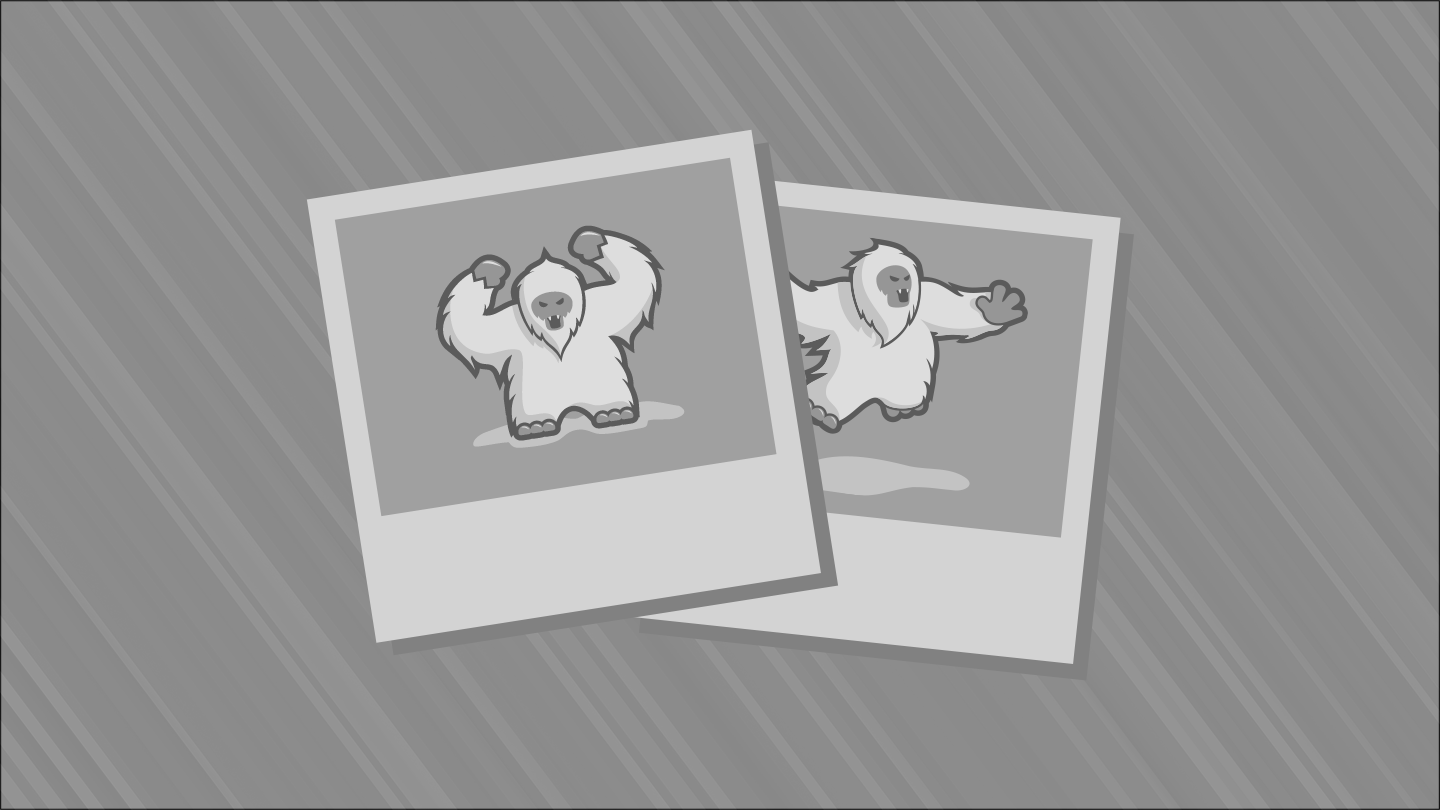 |
| Marty Hart 2012 |
This viewer never stopped being thrown out of the show by protagonist Martin Hart (Woody Harrelson) straining all his words through a mouth fist-full of gravel. I kept thinking of the guy who plays Deacon on Nashville, who also delivers his lines through his teeth, meanwhile plumping up his cheeks like a squirrel's filled with nuts.
 |
| Rust Cohle 1995 |
Rust Cohle/Matthew McConaughey's way of delivering his lines is equally odd, though in a different sort of way. It is even hypnotic, as one would expect from someone the script continually hints is as equally psychopathic in his violence as the serial killer(s).
These delivery styles are supposed to convince the viewer that Martin is a native Louisianan, and Rust used to live in Texas? I kept thinking of all the very bad Brit television shows that always make the U.S. characters come from Texas or somewhere in the South, because evidently that's the only way actors can think of to talk like a USian, and how preposterous they sound. Certainly not like a Texan or any Southerner ever born.
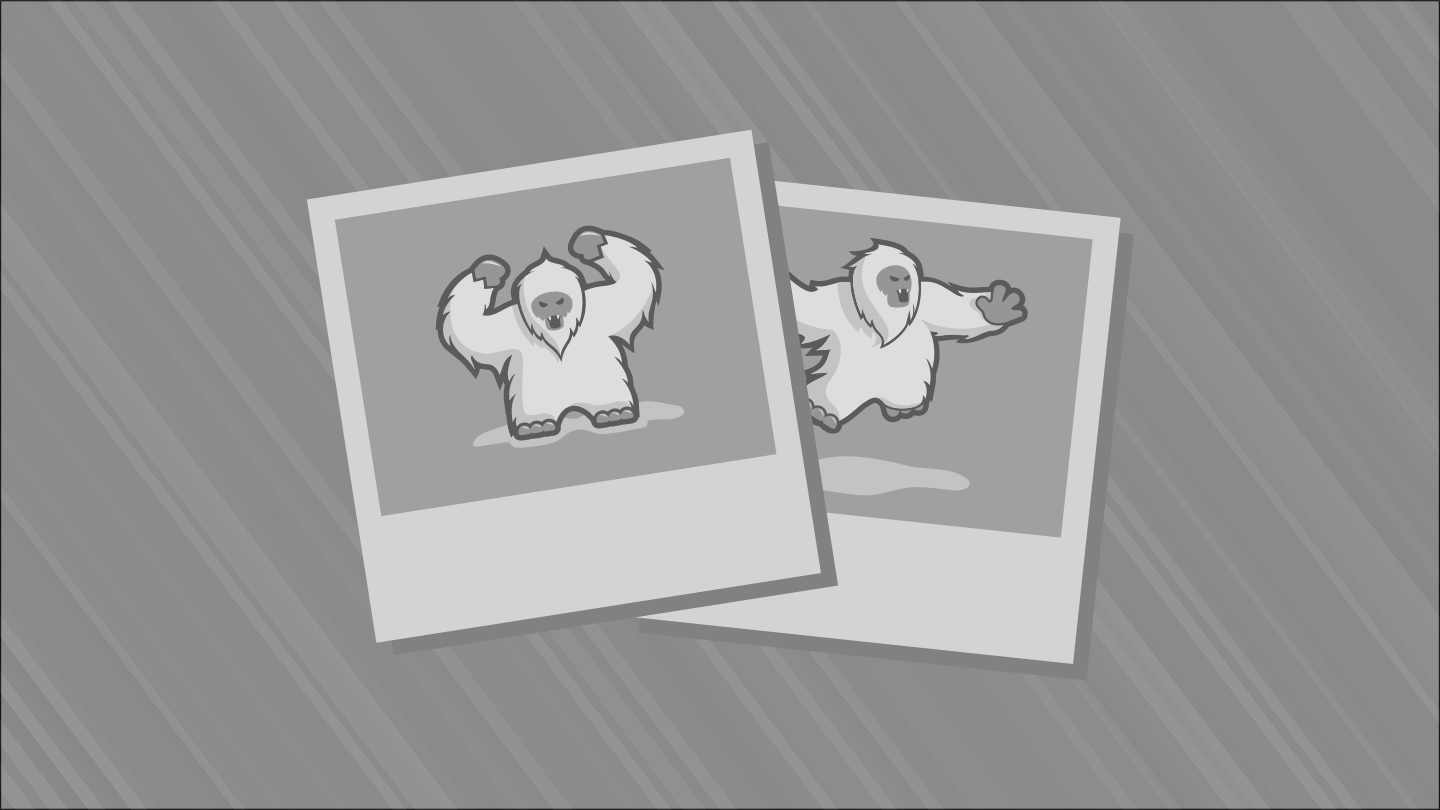 |
| Marty Hart 1995 |
 |
| Rust Cohle 2012 |
is delivered by Marty, "I've got an idea. Let's make the car a place of silent reflection from now on, all right?" Prime time crime novelist, James Lee Burke, with his has worked this vein deeply in his long-running Robicheaux- Purcell series.
In the middle of the series comes the episode in which our two heroes infiltrate a biker drug gang -- every member of which has hair to ass in the back and down to his nipples in the front. Our Heroes have clean chins and cop haircuts. WHERE IS THE UNDERCOVER? This was a fairly pointless episode, evidently included for the sake of a lot of shooting, and o did the reviewers adore it,
In the final episode both Heroes impossibly survive a knife to the gut (Rust Cohle/Matthew McConaughey) (hoisted into the air on that knife and held there) and a hatchet into the chest (Martin Hart / Woody Harrelson). James Lee Burke’s Dave Robichaeux and Clete Purcell, moved from New Orleans to Acadiana, never die either (though wives and girlfriends do), not from the most ghastly wounds, meat-grinding vehicular crashes or fire blazing explosions. Whatever knocks them out, evidently the air of Acadiana can preserve Heroes to fight the Real Evil another day.
 |
| Brothel in the swamp, right where you want it. Mosquito joy. |
Women in True Detective. Hmm. What are women? Evidently to be female is to be non-dimensional cray-cray, hapless victim, prostitute -- ALWAYS HAVE PROSTITUTES -- or bad wife who coerces sex from her husband's partner because she has learned her husband serially cheats on her, and though she tells him to get out, he won't leave.
To quote from Vulture:
It’s made from equal parts film noir, Chinatown-style corruption parable, serial-killer potboiler, 3-a.m.-in-the-dorm-room-with-bong-hits philosophical inquiry, and buddy-cop comedy. And it climaxed with a bloody, ridiculous, yet kind of awesome installment that
presented its hero, Matthew McConaughey’s Rust Cohle, as some kind of cornpone risen Christ.
True Detective was beautifully photographed, and it is engrossing. McConaughey's cheekbones are particularly mesmerizing.
The most interesting aspect of the series for me is how it slides through time, the past and present, and the musings of the future. Katrina is the breaking place between their shared past and their present encounter, which is absolutely true for Louisianans -- and then Rita, in Acadiana, following Katrina. So much is lost, not least pre-digitized criminal records. Having them encounter each other again after that break shows how the two men changed and how they did not, and how certain actions (and irritations) between two allies can follow all the way up
 |
| The reason the viewer isn't interested in these killers. The others get away with it. |
Starting off the drive around the region, our Breaux Bridge friend took us to have breakfast at a local establishment that would be at home anywhere with a hipster population: local artists' work on the walls, and for sale; designer coffee drinks made to order, local baked goods from bread to muffins to sinful desserts, sandwiches and salads and other dishes, none of which was priced much or at all below what an NYC place would charge. Wi-Fi. An associated art gallery. After breakfast he took us on an itinerary of music clubs, museums, art - performance spaces, theaters.
On our way to the local artisnal brewery I asked, "Is this place as filled with truly evil people as James Lee Burke writes about or in True Detective?" (I was meaning right now, not the horrific slavery past of sugar plantation-prisons; our friend knew what I meant.)
He was silent.
Then he said, "Yes."
Sunday, June 14, 2015
We Can Lay A Wager That No One Else Woke Up Today With This Question
Why did European at the start of the medieval period begin to wear hats, and caps and ever more elaborate (and frequently downright silly and other times downright ugly) headgear if they were the privileged classes?
The Greeks and the Romans didn't wear big silly things on their heads by-and-large, other than hoods from their cloaks and battle helmets. True, the odd laurel leaf crown showed up at drinking parties and ceremonies honoring poets, generals and dictators.
But not this sort of thing.
Or these.
Now this is quite attractive. Naturally, it's Italian, who drew many fashion ideas from both Africa and the Turks.
But this sort of thing (poor Katherine of Aragon!) is downright hideous, and surely most uncomfortable (but since when has fashion ever been interested in comfort?).
Men generally had more attractive headwear, it seems, though the head on which the hat was hung may not have been so attractive. Thinking Henry VIII.
Where did this thing begin? With the Church?
It's hard not to think Monty Python made these up.
The Greeks and the Romans didn't wear big silly things on their heads by-and-large, other than hoods from their cloaks and battle helmets. True, the odd laurel leaf crown showed up at drinking parties and ceremonies honoring poets, generals and dictators.
But not this sort of thing.
Or these.
Now this is quite attractive. Naturally, it's Italian, who drew many fashion ideas from both Africa and the Turks.
But this sort of thing (poor Katherine of Aragon!) is downright hideous, and surely most uncomfortable (but since when has fashion ever been interested in comfort?).
Men generally had more attractive headwear, it seems, though the head on which the hat was hung may not have been so attractive. Thinking Henry VIII.
Where did this thing begin? With the Church?
It's hard not to think Monty Python made these up.
Thursday, June 11, 2015
Leopardi (Il giovane favoloso)
Wednesday we made the 1 PM screening at Lincoln Center's Walter Reade Theater of Leopardi (Il giovane favoloso), produced, directed and co-scripted by Mario Martone, about Italy's still-beloved and venerated Romantic era poet and philosopher, Giacomo Leopardi (1798-1837). I had been previously very impressed by Martone's 2011 historic film Noi credevamo (We Believed), which was about Mazzini and the Risorgimento.
I highly recommend Leopardi as a compelling experience. Cinematographically, the film is gorgeous. For someone interested in the history and culture of this era (think, Stendhal's Charterhouse of Parma set in this post-Napoleonic Italy) it's impossible to pull one's eyes away.
The film was shot on location, in the formative places of the poet's life and work: his birthplace in Recanati, Rome, Milan, Florence and Naples.
The last section is located in Naples, home to the family of Giacomo's loyal and steadfast friend, historical novelist (the international influence of Sir Walter Scott, the father of historical fiction) and political activist, Antonio Ranieri.
Among the wonderful Naples street scenes, one night sequence is musically counterpointed by arabic melismatic singing supported by a hard pounding atabal. This single scene telegraphs enormous amounts of Naples's past and present, as currently North African Islamic immigration again pours its cultural influences into the boot of Italy. The conclusion of the film takes place outside the city, when they move to Torre Del Greco, the jumping-off place for 19th- century tourists going to visit Pompeii and Herculaneum.
From Wiki:
This section of the film provides a spectacular Vesuvius eruption, which, I think, takes place in 1832 (the poet dies in 1837). We hear voice-overs of the poet declaiming his own poetry about the volcano, the mountain and the desertifcation of its slopes from periodic lava flows throughout, as earlier in the course of the film we've listened through many scenes of the poet's voice-overs during his earlier years in Recanati, Rome, Milan and Florence.
The English subtitles of these voice-overs are from CANTI / Poems / A Bilingual Edition, Giacomo Leopardi; Translated from the Italian and annotated by Jonathan Galassi, President and Publisher of Farrar, Straus and Giroux. (The New York Times review from 2010 can be read here.) There were several lyrical addresses to the moon in the film. I cannot recall if this particular one was included -- I think it was -- but in any case this Galassi translation gives a good sense of the lunar glow that illuminates several scenes:
Giacomo Leopardi's Search for a Common Life Through Poetry: A Different Nobility A Different Love by Frank Rosengarten is a fast way to learn something of who Giacomo Taldegardo Francesco di Sales Saverio Pietro Leopardi (1798 - 1837) was, and why he remains meaningful to Italians.
Rosengarten is particularly enlightening addressing the differences in the visions of nature between the Italian poet and the British Romantic poets. For Leopardi, nature is not necessarily a cleansing, healing power of the sublime, or at least not always. It frequently is powerfully, indifferently, malign and destructive, not only of man's works but of humanity itself. This is the inspiration of the lyric, "Wild Broom" or, "Flower of the Desert" Leopardi wrote after removing to Naples, then to Torre del Greco, and witnessing an eruption of Vesuvius.
Mario Martone, who, grew up in Naples, understands what it is to live one's life with the gun of Vesuvius pointed at one's head. It's natural then too, that Leopardi, who shared such experiences of so many Italians, past and present, remains a significant force in Italian poetry and philosophy.
After the extensive credits for this logistical feat of film-making finished rolling, I stood a long time on line for the ladies' room, where women talking in Italian and English seemed to know Leopardi's poetry well, and were praising the film for the seamlesss working of his verse into the film's scene.
The criticism they expressed -- I think -- was connected to the film having given too little depiction of the women in Giacomo Leopardi's life. More screen time was given to prostitutes and the Florentine beauty, Fanny Targioni-Tozzetti, for whom he suffered unrequited love, than to the devotion of his own sister, and the sister of Ranieri -- both of them named Paolina, both of whom transcribed his writing, and who provided intellectual stimulus and unstinting adoration. The English language literary critics who have written of the poet, those at which I've glanced, do seem to agree that he was a misogynist, which may have something to do with this criticism.
The poet suffered life-long from what was probably a kind of painful spinal tuberculosis, called Pott Disease. This is enough to make anyone think that neither nature nor gods intend human life for happiness -- though the poet himself was infuriated by the assumption that it was his infirmity, not his intellect, that informed his irony, pessimism, doubt and passionate melancholy.
His poetic expression contains strong elements of what are now categorized in art and literature as "Gothic." It is more than possible his near contemporary Edgar Allan Poe (1809 - 1849) knew Leopardi's poetry, within which indifferent nature, and her handmaiden, death, oversee all. I can hear perhaps an echo of him in Algernon Charles Swinburne's (1837 - 1909), "The Garden of Proserpine," whose sound scheme melts each word into another, as death inevitably dissolves life:
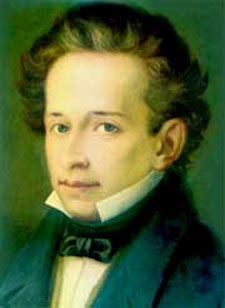 |
| Young Count Giacomo Leopardi |
I highly recommend Leopardi as a compelling experience. Cinematographically, the film is gorgeous. For someone interested in the history and culture of this era (think, Stendhal's Charterhouse of Parma set in this post-Napoleonic Italy) it's impossible to pull one's eyes away.
 |
| Having fun in Florence with Fanny, who breaks Giacomo's heart. Fanny sleeps with Ranieri, but the two men's friendship survives. |
 |
| Ranieri |
 |
| Film Ranieri |
Among the wonderful Naples street scenes, one night sequence is musically counterpointed by arabic melismatic singing supported by a hard pounding atabal. This single scene telegraphs enormous amounts of Naples's past and present, as currently North African Islamic immigration again pours its cultural influences into the boot of Italy. The conclusion of the film takes place outside the city, when they move to Torre Del Greco, the jumping-off place for 19th- century tourists going to visit Pompeii and Herculaneum.
From Wiki:
Torre del Greco is the largest city of the Vesuvius area, with about 104,000 inhabitants. It was destroyed several times after the Pompeii eruption in 79 and the last time in 1794 when the lava flow reached the sea, 7 kilometers from the crater. The town shown in the background was built on this lava after 1794.
This section of the film provides a spectacular Vesuvius eruption, which, I think, takes place in 1832 (the poet dies in 1837). We hear voice-overs of the poet declaiming his own poetry about the volcano, the mountain and the desertifcation of its slopes from periodic lava flows throughout, as earlier in the course of the film we've listened through many scenes of the poet's voice-overs during his earlier years in Recanati, Rome, Milan and Florence.
The English subtitles of these voice-overs are from CANTI / Poems / A Bilingual Edition, Giacomo Leopardi; Translated from the Italian and annotated by Jonathan Galassi, President and Publisher of Farrar, Straus and Giroux. (The New York Times review from 2010 can be read here.) There were several lyrical addresses to the moon in the film. I cannot recall if this particular one was included -- I think it was -- but in any case this Galassi translation gives a good sense of the lunar glow that illuminates several scenes:
What are you doing, moon, up in the sky;We whispered admiring comments (very quietly) to each other during the watching of the film, while continuing to watch the screen. This speaks to the intensity of the visual experience it provides. Turn away one's head and one has missed something splendid. We talked about Leopardi all through dinner -- which we had in a traditional New York southern Italian style restaurant across from Our Lady of Pompeii Church on Carmine Street.
what are you doing, tell me, silent moon?
You rise at night and go, observing the deserts.
Then you set.
Aren't you tired of plying the eternal byways?
Aren't you bored?
Do you still want to look down on these valleys?
Giacomo Leopardi's Search for a Common Life Through Poetry: A Different Nobility A Different Love by Frank Rosengarten is a fast way to learn something of who Giacomo Taldegardo Francesco di Sales Saverio Pietro Leopardi (1798 - 1837) was, and why he remains meaningful to Italians.
Rosengarten is particularly enlightening addressing the differences in the visions of nature between the Italian poet and the British Romantic poets. For Leopardi, nature is not necessarily a cleansing, healing power of the sublime, or at least not always. It frequently is powerfully, indifferently, malign and destructive, not only of man's works but of humanity itself. This is the inspiration of the lyric, "Wild Broom" or, "Flower of the Desert" Leopardi wrote after removing to Naples, then to Torre del Greco, and witnessing an eruption of Vesuvius.
Mario Martone, who, grew up in Naples, understands what it is to live one's life with the gun of Vesuvius pointed at one's head. It's natural then too, that Leopardi, who shared such experiences of so many Italians, past and present, remains a significant force in Italian poetry and philosophy.
After the extensive credits for this logistical feat of film-making finished rolling, I stood a long time on line for the ladies' room, where women talking in Italian and English seemed to know Leopardi's poetry well, and were praising the film for the seamlesss working of his verse into the film's scene.
 |
| Paolina Leopardi |
The criticism they expressed -- I think -- was connected to the film having given too little depiction of the women in Giacomo Leopardi's life. More screen time was given to prostitutes and the Florentine beauty, Fanny Targioni-Tozzetti, for whom he suffered unrequited love, than to the devotion of his own sister, and the sister of Ranieri -- both of them named Paolina, both of whom transcribed his writing, and who provided intellectual stimulus and unstinting adoration. The English language literary critics who have written of the poet, those at which I've glanced, do seem to agree that he was a misogynist, which may have something to do with this criticism.
The poet suffered life-long from what was probably a kind of painful spinal tuberculosis, called Pott Disease. This is enough to make anyone think that neither nature nor gods intend human life for happiness -- though the poet himself was infuriated by the assumption that it was his infirmity, not his intellect, that informed his irony, pessimism, doubt and passionate melancholy.
His poetic expression contains strong elements of what are now categorized in art and literature as "Gothic." It is more than possible his near contemporary Edgar Allan Poe (1809 - 1849) knew Leopardi's poetry, within which indifferent nature, and her handmaiden, death, oversee all. I can hear perhaps an echo of him in Algernon Charles Swinburne's (1837 - 1909), "The Garden of Proserpine," whose sound scheme melts each word into another, as death inevitably dissolves life:
. . .Though one were strong as seven,
He too with death shall dwell,
Nor wake with wings in heaven,
Nor weep for pains in hell . . .
Labels:
artists,
historical fiction,
Italy,
literature,
Movies,
NYC,
poetry,
writers
Tuesday, June 9, 2015
Maturín, Venezuela - Location
When the bloody wars of South American independence from Spain were waged, these countries, per se, did not exist. Mosr of the regional colonies that would become nation-states certainly didn't have their nation-state names then, either.
However, the cities and so on had their names. So here is the city that shares the name of Patrick O'Brian's admired naturalist and ship's doctor, Stephen Maturin.
However, the cities and so on had their names. So here is the city that shares the name of Patrick O'Brian's admired naturalist and ship's doctor, Stephen Maturin.
Monday, June 8, 2015
Historical Gleanings Into Historical Fiction - Patrick O'Brian and Simon Bolívar
As all know who have enjoyed reading Patrick O'Brian's splendid naval adventure series of Captain Aubrey and Stephen Maturin's adventures during the wars of Napoleon, the War of 1812, etc., O'Brian also translated into his fiction from the great fiction achievements of the great writer of the same period, Jane Austen.
Many of us also can testify first hand how very well-researched is O'Brian's series: history manners, the variety of ways of speaking, slang, naval terms, you name it, O'Brian had studied all of it. Surely he very carefully studied period maps as well.
Perhaps it's not as well known how sly O'Brian was. For example, I recently learned only by looking at the maps of northern South American in this era that one of the places in Simon Bolívar's Liberator trajectory, in what is Venezuela, is named Maturín. As we well remember, Stephen Maturin was a Spaniard -- who identified as a Catalan, very important! -- who so hated Napoleon he was willing to work with the English. This is the historical
background for some of the volumes, by the way -- the English blockading the rebelling Spanish South American colonies when they were allied with Spain, just as they blockaded the trade of North America. Previous to these wars, 40% of South America's trade with the infant United States. So one can see how important all these actions are.
It was a happy moment, seeing Maturín on a map in a history about the South American colonies' savage and terrible wars of independence from Spain.
I still can't find out, though surely South Americans have written books about it, from where Spain got the money in 1811 - 1812 to send such a huge fleet to Caracas to counter the Miranda liberation.
Many of us also can testify first hand how very well-researched is O'Brian's series: history manners, the variety of ways of speaking, slang, naval terms, you name it, O'Brian had studied all of it. Surely he very carefully studied period maps as well.
Perhaps it's not as well known how sly O'Brian was. For example, I recently learned only by looking at the maps of northern South American in this era that one of the places in Simon Bolívar's Liberator trajectory, in what is Venezuela, is named Maturín. As we well remember, Stephen Maturin was a Spaniard -- who identified as a Catalan, very important! -- who so hated Napoleon he was willing to work with the English. This is the historical
background for some of the volumes, by the way -- the English blockading the rebelling Spanish South American colonies when they were allied with Spain, just as they blockaded the trade of North America. Previous to these wars, 40% of South America's trade with the infant United States. So one can see how important all these actions are.
It was a happy moment, seeing Maturín on a map in a history about the South American colonies' savage and terrible wars of independence from Spain.
I still can't find out, though surely South Americans have written books about it, from where Spain got the money in 1811 - 1812 to send such a huge fleet to Caracas to counter the Miranda liberation.
Labels:
books,
historical fiction,
history,
research,
the age of revolution,
writers
Sunday, June 7, 2015
The Edge of the World by Michael Pye
The NYT's Sunday Book Review includes a very good history I read last month, The Edge of the World, by Michael Pye.
This history has one of the best analysis of the other roots of European trade and capitalism in the centuries we used to call the dark ages and the middle ages, before the Age of Nation States. His thesis is the mercantile peoples around the North Sea are as essential to how this process played out as the merchants, traders and money lenders around the Braudelian Mediterranean coasts. Or, as he puts it, he's not denying or minimizing the process that took place in these post-latin empire locations, but that without examination of the Vikings, Frisians, Hansa, etc., the picture is missing essential pieces, particularly how Charlemagne's Empire operated on these foundations that eventually merges the north and south into, for a while, the European Christendom.
Pye, perhaps sensitized by being a gay man, instead of employing the default "he" tends to employ "she" which always caught my attention, proving how deeply run the gender assumptions in history, whether written history or history merely referred to.
He also gives women as traders and entrepreneurs adequate space in his text, drawing attention to how central women commonly were in the trade and financial history of Europe -- and which is hardly ever included in the landscape portrait in the histories of trade, finance and money, at least until recently, and then confined still mostly to monographs, dissertations and narrowly focused scholarly works. Pye includes the many significant contributions of women without exaggerating or special pleading.
One of the two most fascinating revelations in The Edge of the World for this reader is his nuanced description of what the Hansa was and how it operated. In those days already, it was pure, unchecked capitalism. The Hansa existed for one thing, was concerned with one thing only -- making money. The Hansa
The second revelation were the Beguines, of whom I'd not heard of previously, as I'm not a medievalist.
The beguine I knew is a popular, social dance, with accompanying songs and rhythms. The beguine appeared in the French Antilles, back in the earlier decades of the 20th century, built, as are so many of the musics of the Caribbean on what we call the habanera.
In this case however, the Beguines were women who lived secular yet ascetic, scholarly yet entrepreneurial lives in compounds separate from men and heterosexual society in the 12th, 13th and 14th centuries in middle-northern Europe, particularly the Low Countries. The compounds housed only women and their children. They were not affiliated with the Church. There were no vows. They could leave any time, and they could marry if they wished -- though with marriage they had to leave the béguinage community. Some of them
became very wealthy through trade and other mercantile activities. Most histories of the Beguines concentrate on the mystical aspects of some of the women, and the turn toward more overtly religious activity that happened in the 14th century. Pye, however, isn't interested in that aspect, but in what the histories hardly ever elaborate on or even mention: the forms of work and money-making the women of these communities practiced -- and their literacy. Some of them were notable
scholars. I kept thinking what a haven the Beguine communities must have been for so many different kinds of women, particularly in a day when there was really no language to even think about diverse orientations that we now group under the classification of or gay. As a beguine you need not marry and you most certainly were about working. You could exist as a single woman! Though now mostly affiliated with the Church in some manner, beguine communities still exist.
Throughout The Edge of the World 's prose is lively and fast-paced, yet packed with information in every sentence that will be new to many if not most readers who are not scholars of these centuries.
This history has one of the best analysis of the other roots of European trade and capitalism in the centuries we used to call the dark ages and the middle ages, before the Age of Nation States. His thesis is the mercantile peoples around the North Sea are as essential to how this process played out as the merchants, traders and money lenders around the Braudelian Mediterranean coasts. Or, as he puts it, he's not denying or minimizing the process that took place in these post-latin empire locations, but that without examination of the Vikings, Frisians, Hansa, etc., the picture is missing essential pieces, particularly how Charlemagne's Empire operated on these foundations that eventually merges the north and south into, for a while, the European Christendom.
Pye, perhaps sensitized by being a gay man, instead of employing the default "he" tends to employ "she" which always caught my attention, proving how deeply run the gender assumptions in history, whether written history or history merely referred to.
He also gives women as traders and entrepreneurs adequate space in his text, drawing attention to how central women commonly were in the trade and financial history of Europe -- and which is hardly ever included in the landscape portrait in the histories of trade, finance and money, at least until recently, and then confined still mostly to monographs, dissertations and narrowly focused scholarly works. Pye includes the many significant contributions of women without exaggerating or special pleading.
 |
| Map of the Hanseatic League |
The second revelation were the Beguines, of whom I'd not heard of previously, as I'm not a medievalist.
How they dance beguine in the Caribbean
How Eleonar Powell and Fred Astaire tap-dance the beguine in "The Broadway Melody of 1940"
Cole Porter plays "Begin the Beguine"
The beguine I knew is a popular, social dance, with accompanying songs and rhythms. The beguine appeared in the French Antilles, back in the earlier decades of the 20th century, built, as are so many of the musics of the Caribbean on what we call the habanera.
became very wealthy through trade and other mercantile activities. Most histories of the Beguines concentrate on the mystical aspects of some of the women, and the turn toward more overtly religious activity that happened in the 14th century. Pye, however, isn't interested in that aspect, but in what the histories hardly ever elaborate on or even mention: the forms of work and money-making the women of these communities practiced -- and their literacy. Some of them were notable
scholars. I kept thinking what a haven the Beguine communities must have been for so many different kinds of women, particularly in a day when there was really no language to even think about diverse orientations that we now group under the classification of or gay. As a beguine you need not marry and you most certainly were about working. You could exist as a single woman! Though now mostly affiliated with the Church in some manner, beguine communities still exist.
Throughout The Edge of the World 's prose is lively and fast-paced, yet packed with information in every sentence that will be new to many if not most readers who are not scholars of these centuries.
Thursday, June 4, 2015
Historical Research - The Next Projects
In preparation for next history project, as mentioned previously, it's the post-Civil War eras into which I dig. As mentioned previously this means historians such as C Vann Woodward.
It also means earlier historians as Henry Wilson, who was the 18th Vice President of the U.S. (1873–1875), Senator from Massachusetts (1855–1873), and always a strong opponent of slavery.
He was the first of those in the Union north who lived through the lead-up and the war itself to write a history of the Civil War: the exceedingly valuable History of the Rise and Fall of the Slave Power in America, (three volumes, 1872–77), and earlier, History of the Reconstruction Measures of the Thirty-ninth and Fortieth Congresses, 1865-68 (1868). This came out long before Abraham Lincoln: A History (1890), the ten-volume account of the life and times of Abraham Lincoln, written by John Nicolay and John Hay, who were his personal secretaries during the American Civil War.
This project will concentrate on other kinds of writing of the periods as much as historical studies, and photography, and ultimately the movies.
The other project is the South American war for independence from Spain and Simon Bolívar, and the connections among the South American hero, Andrew Jackson and Napoleon. The three have reputations in certain quarters as 'democrats', liberators, and revolutionaries. All three were tyrants after achieving power.
How did Napoleon, for instance, achieve a reputation for tolerance of Jews, when he was viciously anti-semitic? How he can be given credit as a an emancipator of slaves is impossible to understand, as his official and unofficial policies toward slavery included grandiose plans to reinstate slavery in the Caribbean and fill with slavery all of the Louisiana territory that in a pique he threw at the U.S. -- and then wanted back, but too late.
There are connections here, among them and the War of 1812 as well as Romanticism, which I'd like to tease out. This also makes for good conversationswith Cuban intellectuals.
It also means earlier historians as Henry Wilson, who was the 18th Vice President of the U.S. (1873–1875), Senator from Massachusetts (1855–1873), and always a strong opponent of slavery.
He was the first of those in the Union north who lived through the lead-up and the war itself to write a history of the Civil War: the exceedingly valuable History of the Rise and Fall of the Slave Power in America, (three volumes, 1872–77), and earlier, History of the Reconstruction Measures of the Thirty-ninth and Fortieth Congresses, 1865-68 (1868). This came out long before Abraham Lincoln: A History (1890), the ten-volume account of the life and times of Abraham Lincoln, written by John Nicolay and John Hay, who were his personal secretaries during the American Civil War.
This project will concentrate on other kinds of writing of the periods as much as historical studies, and photography, and ultimately the movies.
The other project is the South American war for independence from Spain and Simon Bolívar, and the connections among the South American hero, Andrew Jackson and Napoleon. The three have reputations in certain quarters as 'democrats', liberators, and revolutionaries. All three were tyrants after achieving power.
 |
| Painting by Goya 1808-1812: Napoleon the Colossus |
There are connections here, among them and the War of 1812 as well as Romanticism, which I'd like to tease out. This also makes for good conversationswith Cuban intellectuals.
Wednesday, June 3, 2015
Reading Wednesday: The Most Southern Place on Earth
The previous week contained very little reading due to being on the move almost all the time one wasn't asleep: research plus the travel time, meeting up with friends and concluding with the annual Caribbean Studies Association conference. Next year this unfortunately acronymed for USians -- CSA for many of us immediately means the Confederate States of America -- meets in Port-au-Prince, in a tourist hotel bubble surrounded by direst poverty. You cannot go wondering about outside if you don't know your way around the local landscape, cultural, political and economic.
One wonders how this location will work out. There was a great deal of controversy this year, we learned, about holding the conference in New Orleans, as New Orleans is not part of Caribbean geography, as anyone who has looked at a map knows. This latter has been, of course, an argument we have been making for over 20 years now. Though, as our plenary pointed out, "Caribbean" is a terrific brand. As el V put it, 'Nobody was going to spend millions of dollars to create a movie franchise called Pirates of the Gulf of Mexico." (Just like Cuba, Havana and New Orleans are all also excellent brands.)
Being so occupied, the only book I read in, the reading limited to the flights to and from NO, and in Breaux Bridge for an hour before bed, when the internet got knocked out from a lightning strike, was The Most Southern Place on Earth: The Mississippi Delta and the Roots of Regional Identity (1992; Oxford University Press) by James C. Cobb. This is one of the seminal works that explains the contemporary south by viewing the economic and cultural history of this place, a rough triangle between the lower Mississippi River and the Yazoo River.
It is not the Mississippi River delta -- which tends to confuse those unfamiliar with deep south geography. the Mississippi River delta is way down further south. "Delta" here means this particular locale within the state of Mississippi. Or, as author/ historian David Cohn wrote in 1935:
Africatown in Pritchard (where settled the descendants of the last slave ship, the Clotilda, from Africa to land on U.S. shores in 1860, brought as deliberate provocation to war, settled after the Civil War) outside of Mobile, remains as shocking in its tumbledown, malnourished poverty in May, 2015 as it was in May, 1910 or 1930 or 1940.
Katrina made all of it worse, as it's obvious no FEMA monies got trickled down to any of these Africatowns in the deep south, though of course the fracking so-called presidential library of Jefferson Davis got 10 million federal FEMA dollars and the mansion which a wealthy widow gave him, Beauvoir, received 4 million FEMA dollars for repairs after Katrina. But the homes of the poor black citizens of Mississippi and Alabama -- nada. You can see this, with your own eyes. They can't even hide it. But nor do they care obviously, as the stars and bars flies over all the Welcome to Mississippi rest stops . . . .
Among the elements that Cobb works in so cogently within his main threads of white supremacy, labor economics and political dominance of the ruling Delta planter aristocracy is the development of the Blues -- why the development of the Blues, and their significance, in this particular region. He provides maps that coordinate the birth places and earlier years of a legion of legendary Blues
musicians, which run up and down the Mississippi and cluster with the density of cotton bolls in the Delta. One chapter devoted particularly to the Blues is titled, "The Blues Is A Lowdown Shakin' Chill," one of the Blues classics particularly
attributed to the legendary Robert Johnson. I had skipped ahead to that chapter on this re-read, in the hour before meeting up with friends and dinner, and then going out to hear contemporary Blues-man, Brother Tyrone at the Ooh Poo Pah Doo Bar, which is named after the 1960 hit by the owner's father, the late R&B legend Jessie Hill.
Frequently Cobb draws understanding from the Delta's white supremacy wealth and power's support by the federal government, used by it to maintain black labor poverty and powerlessness, that this process isn't limited to one place in the United States, or to the klepto governments abroad. This is a deliberate cooperation between one power and another power, united to keep the flow of wealth concentrated in a few hands while keeping oppressed and helpless the rest. The local power achieves wealth, and in return they provide the government the order of local stability. (The Civil Rights era blew this out of the water for a while.) More than once Cobb suggests -- back in 1992! -- that this process will spread out of the Delta to affect the rest of the United States in the near future, because that is how power and capitalism operate.
In other ways though, reading The Most Southern Place on Earth for the first or repeat experience, is exhilarating. Cobb is a fine historian and an equally fine writer. The book is dense with information about the evolution of the planters' ruling class that adjusted to every change from Emancipation through Reconstruction, Jim Crow, FDR and the Civil Rights era to maintain its supremacy, while the laboring class, both poor white and black, always did worse. It's a brilliant study, particularly how the planters such as the Percys were able to divert any and all federal funds for "relief" during the New Deal to themselves, just as they did later with the Food Stamp program. But they were doing this even before Appomattox.
This is a book worth reading even if the south isn't a particular interest of the reader's, if the reader is at all interested in changing the way things are right now as fewer people own more and more of the wealth and the rest of us are left holding the bag.
One thing Marx wasn't able to foresee -- though Cobb was already getting glimmers of it -- that capital would reach a pinnacle of power in which it didn't need human labor at all.
I need to read this one next:
Then I'll be ready to backtrack to an earlier historian, C. Vann Woodward, and his Origins of the New South, 1877–1913 (1951), The Strange Career of Jim Crow (1955) and The Burden of Southern History (1955). Woodward, a Bancroft Prize winner, one of the most influential of historians, who died in 1999, did not like the direction the younger, 'new' historians such as Cobb were going. He tended to quite sneer at them in fact, particularly Cobb's breaking the ground in terms of southern economic-political history, by declaring the biggest change came in the New Deal era, not the Reconstruction and Jim Crow eras.
Which is why my method is to read the more contemporary historians in a subject before the older ones. It makes it easier for me to glean what is still worth learning from the earlier studies, because I won't need to fulminate about -- o dear what you got wrong! If one denies oneself digging into earlier works there's a great deal worth knowing that one misses.
One wonders how this location will work out. There was a great deal of controversy this year, we learned, about holding the conference in New Orleans, as New Orleans is not part of Caribbean geography, as anyone who has looked at a map knows. This latter has been, of course, an argument we have been making for over 20 years now. Though, as our plenary pointed out, "Caribbean" is a terrific brand. As el V put it, 'Nobody was going to spend millions of dollars to create a movie franchise called Pirates of the Gulf of Mexico." (Just like Cuba, Havana and New Orleans are all also excellent brands.)
Being so occupied, the only book I read in, the reading limited to the flights to and from NO, and in Breaux Bridge for an hour before bed, when the internet got knocked out from a lightning strike, was The Most Southern Place on Earth: The Mississippi Delta and the Roots of Regional Identity (1992; Oxford University Press) by James C. Cobb. This is one of the seminal works that explains the contemporary south by viewing the economic and cultural history of this place, a rough triangle between the lower Mississippi River and the Yazoo River.
 |
| The green is the Mississippi Delta. |
It is not the Mississippi River delta -- which tends to confuse those unfamiliar with deep south geography. the Mississippi River delta is way down further south. "Delta" here means this particular locale within the state of Mississippi. Or, as author/ historian David Cohn wrote in 1935:
 |
| Peabody Hotel 1886 |
This region is peculiar even within the milieu of the rest of the deep south, and even the state of Mississippi itself. This was a re-read; the first reading was before the March 2014 sojourn there. It was valuable for that sojourn to have read it before spending boots on the ground time there, but even more valuable to read again after having done so. All the markers that Cobb hits in The Most Southern Place on Earth are still present to be read, in the other deep south states, like Alabama and places in Mississippi, as Biloxi.
"The Mississippi Delta begins in the lobby of the [Memphis] Peabody Hotel and ends on Catfish Row in Vicksburg. The Peabody is the Paris Ritz, the Cairo Shepherd's, the London Savoy of this section. If you stand near its fountain in the middle of the lobby... ultimately you will see everybody who is anybody in the Delta..."
Africatown in Pritchard (where settled the descendants of the last slave ship, the Clotilda, from Africa to land on U.S. shores in 1860, brought as deliberate provocation to war, settled after the Civil War) outside of Mobile, remains as shocking in its tumbledown, malnourished poverty in May, 2015 as it was in May, 1910 or 1930 or 1940.
Katrina made all of it worse, as it's obvious no FEMA monies got trickled down to any of these Africatowns in the deep south, though of course the fracking so-called presidential library of Jefferson Davis got 10 million federal FEMA dollars and the mansion which a wealthy widow gave him, Beauvoir, received 4 million FEMA dollars for repairs after Katrina. But the homes of the poor black citizens of Mississippi and Alabama -- nada. You can see this, with your own eyes. They can't even hide it. But nor do they care obviously, as the stars and bars flies over all the Welcome to Mississippi rest stops . . . .
Among the elements that Cobb works in so cogently within his main threads of white supremacy, labor economics and political dominance of the ruling Delta planter aristocracy is the development of the Blues -- why the development of the Blues, and their significance, in this particular region. He provides maps that coordinate the birth places and earlier years of a legion of legendary Blues
musicians, which run up and down the Mississippi and cluster with the density of cotton bolls in the Delta. One chapter devoted particularly to the Blues is titled, "The Blues Is A Lowdown Shakin' Chill," one of the Blues classics particularly
attributed to the legendary Robert Johnson. I had skipped ahead to that chapter on this re-read, in the hour before meeting up with friends and dinner, and then going out to hear contemporary Blues-man, Brother Tyrone at the Ooh Poo Pah Doo Bar, which is named after the 1960 hit by the owner's father, the late R&B legend Jessie Hill.
As was often the case with American assistance to other nations, in the Delta aid offered in the name of economic rehabilitation and human uplift was routed, in the interest of political expediency and stability, through those at the top of the region's socioeconomic structure. As a result, the story of the interaction of agricultural, civil rights, and social welfare policy in the Mississippi Delta is especially instructive. Regardless of region, nation, or hemisphere, when economic reform proceeds under safeguards against redistribution of wealth or power, social and political rights will prove difficult to extend and dangerous to exercise. Meanwhile, whether its story is told in the smudged ledgers of the landlord or the antiseptic memoranda of the bureaucrat, the phenomenon of economic and sociopolitical dependence is likely to remain as real and debilitating as ever.The lesson is that neither assistance nor reform can happen from "inside" or from the top down via the ruling establishment.
Frequently Cobb draws understanding from the Delta's white supremacy wealth and power's support by the federal government, used by it to maintain black labor poverty and powerlessness, that this process isn't limited to one place in the United States, or to the klepto governments abroad. This is a deliberate cooperation between one power and another power, united to keep the flow of wealth concentrated in a few hands while keeping oppressed and helpless the rest. The local power achieves wealth, and in return they provide the government the order of local stability. (The Civil Rights era blew this out of the water for a while.) More than once Cobb suggests -- back in 1992! -- that this process will spread out of the Delta to affect the rest of the United States in the near future, because that is how power and capitalism operate.
In other ways though, reading The Most Southern Place on Earth for the first or repeat experience, is exhilarating. Cobb is a fine historian and an equally fine writer. The book is dense with information about the evolution of the planters' ruling class that adjusted to every change from Emancipation through Reconstruction, Jim Crow, FDR and the Civil Rights era to maintain its supremacy, while the laboring class, both poor white and black, always did worse. It's a brilliant study, particularly how the planters such as the Percys were able to divert any and all federal funds for "relief" during the New Deal to themselves, just as they did later with the Food Stamp program. But they were doing this even before Appomattox.
This is a book worth reading even if the south isn't a particular interest of the reader's, if the reader is at all interested in changing the way things are right now as fewer people own more and more of the wealth and the rest of us are left holding the bag.
One thing Marx wasn't able to foresee -- though Cobb was already getting glimmers of it -- that capital would reach a pinnacle of power in which it didn't need human labor at all.
I need to read this one next:
Then I'll be ready to backtrack to an earlier historian, C. Vann Woodward, and his Origins of the New South, 1877–1913 (1951), The Strange Career of Jim Crow (1955) and The Burden of Southern History (1955). Woodward, a Bancroft Prize winner, one of the most influential of historians, who died in 1999, did not like the direction the younger, 'new' historians such as Cobb were going. He tended to quite sneer at them in fact, particularly Cobb's breaking the ground in terms of southern economic-political history, by declaring the biggest change came in the New Deal era, not the Reconstruction and Jim Crow eras.
Which is why my method is to read the more contemporary historians in a subject before the older ones. It makes it easier for me to glean what is still worth learning from the earlier studies, because I won't need to fulminate about -- o dear what you got wrong! If one denies oneself digging into earlier works there's a great deal worth knowing that one misses.
Labels:
books,
class,
politika,
poverty,
racism,
technology,
the South,
white supremacy
Subscribe to:
Comments (Atom)
